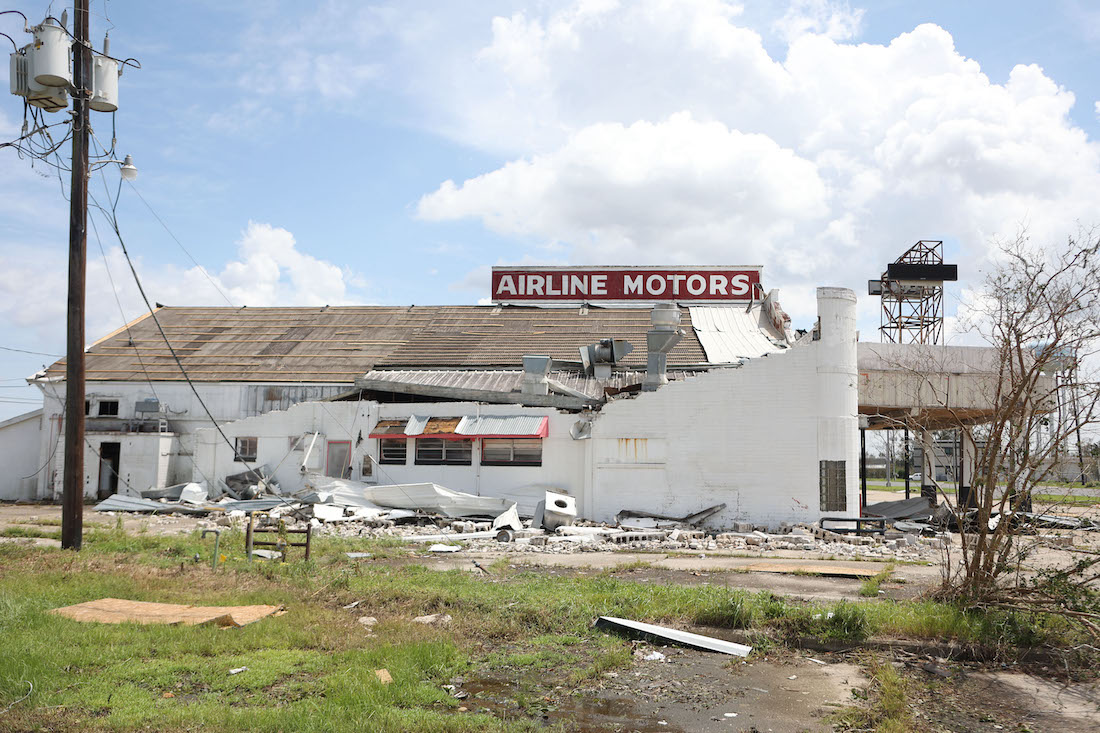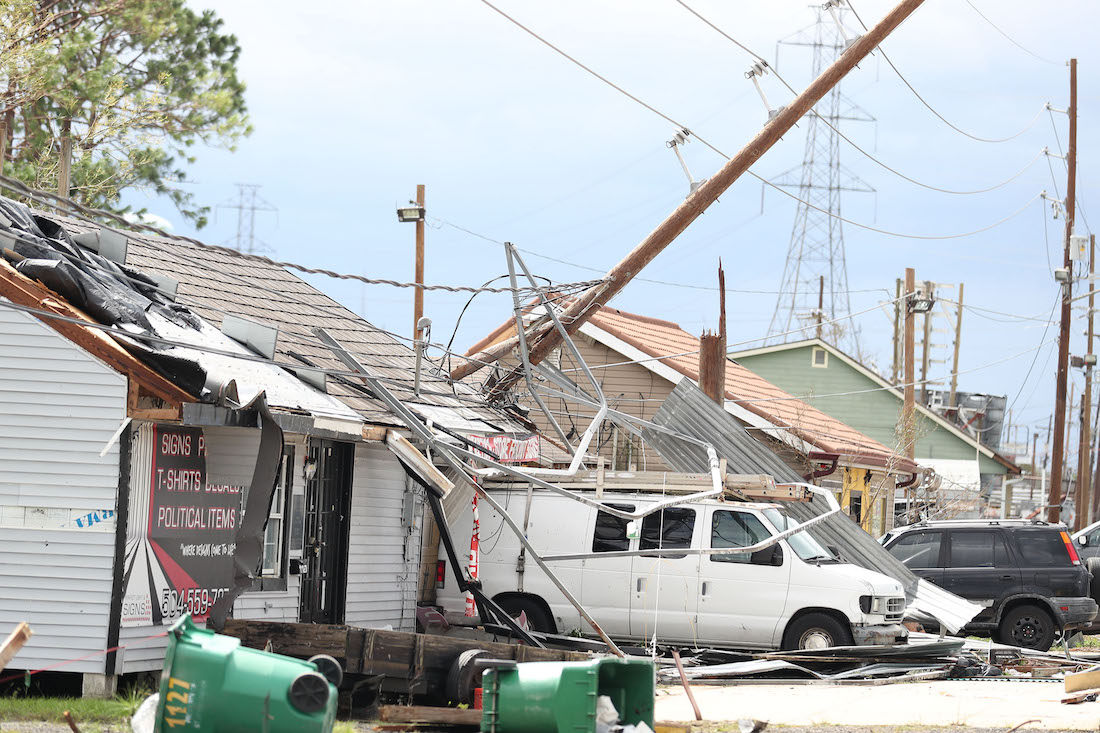Hurricane Ida Leaves Thousands of Louisianans in Need of Urgent Support & Medical Care
Local health systems navigate power outages & COVID-19 crisis; Project HOPE responds with health care reinforcements, PPE & medical supplies
New Orleans, LA (September 3, 2021) — As Louisiana communities navigate dangerous conditions and damage in Hurricane Ida’s wake, Project HOPE’s emergency response team is partnering with local authorities to address urgent health care needs for people most impacted by the storm. With more than one million people still without power in the New Orleans region, immediate medical support is needed in an area still recovering from its highest peak yet in the COVID-19 crisis and a legacy of severe storms.
Harley Jones, senior manager of Domestic Emergency Response for Project HOPE, offered on-the-ground perspective from New Orleans, where he is leading a team of 11 volunteer medical professionals to deliver patient care, in lockstep with local authorities and partners.
“While the scene here in New Orleans is one of severe damage and humanitarian need, there is also a sense of relief that there wasn’t the level of catastrophic destruction they experienced after Hurricane Katrina. There is a lot of wind damage, and there is no power anywhere here. This makes conditions extremely challenging, especially for people with medical needs,” Jones observed.
“Our medical team has fanned out across the affected areas. Teams were triaging residents in Jefferson Parish as they evacuated their homes. In New Orleans, our volunteers are supporting a First Aid station, conducting mobile health assessments with residents in their homes and visiting a 200 unit, six story apartment complex providing wellness checks and triaging residents,” added Jones.
Project HOPE’s medical team is co-located with the New Orleans Health Department in the Central City neighborhood of New Orleans. The organization is supporting local staff by deploying medical volunteers where they are most needed, including at first aid stations, special need shelters, and evacuation centers. Currently, Project HOPE’s teams are operating in Orleans and Jefferson Parishes.
Before Ida struck, Louisiana was reckoning with its worst COVID-19 outbreak yet. Local health systems and frontline health workers have been straining to care for a spike in coronavirus patients in addition to general health care.
“Louisiana’s hospitals were already at capacity with coronavirus patients when Ida hit. Local health workers here are some of the most resilient individuals I have ever worked with,” Jones said. “They know their communities well and have been focused on their communities’ health for a long time, including through the pandemic and now after Hurricane Ida. We are here to provide surge support with our team of medical volunteers, following the lead of local health authorities and responding to the immediate needs of residents,” added Jones, who also led Project HOPE’s response to Hurricane Laura in 2020.
More than 2,400 COVID-19 patients are currently hospitalized across Louisiana. Before Hurricane Ida hit, the number of infections was beginning to decrease in Louisiana. Now, transmission may spike as communities cope in the hurricane’s wake, with people displaced and sheltering in crowded settings or outside of their households.
“People in Louisiana were just beginning to flatten the curve of their worst coronavirus outbreak yet. While officials and emergency response teams are doing everything possible to protect people who evacuated homes to seek safety in shelters, we can’t strongly enough underscore how important it is for community members to uphold pandemic safety measures, like wearing masks and social distancing. Hygiene and handwashing are also essential to stop the spread, which is complicated right now here in New Orleans and other parishes, where power and water are out, and people are in urgent need of basic care.”
The latest in a series of catastrophic severe weather events, Hurricane Ida is testing communities and emergency response workers in an era where climate change is causing increasingly severe storms.
“While Gulf Coast communities are among the most resilient people, natural disasters intensified by climate change are huge threats to health security in the region and globally,” Jones said. “Impacts include deaths, injuries, increased risks of communicable diseases, damage to health facilities and more. This is why increasing investments in emergency preparedness and community resiliency–including local health systems and health workers– is key. We must make sure that when future crises occur, people stay as safe, secure and supported as possible.”
How Project HOPE is Responding
- Project HOPE has deployed an Emergency Response Team, including a team of medical practitioners, who are delivering medical care in New Orleans and Jefferson Parish.
- Project HOPE is working with the Regional New Orleans VOAD and Louisiana Department of Health to support a special needs shelter with medical triage and patient support.
- Project HOPE medical teams are working hand in hand with local responders into communities and special needs shelters to check on residents and provide the necessary support. In partnership with MAP International, Project HOPE is sending an initial shipment of 8,080 Disaster Health Kits (each kit includes a washcloth, first aid kit, shampoo, soap, comb, toothbrush, toothpaste, deodorant, sports bag, and zip bag) along with more than 98,800 N95 masks to be distributed to hurricane-affected communities to prevent the spread of COVID-19.
- Project HOPE is preparing shipments of additional hygiene kits and masks for distribution to shelter locations. The Emergency Response Team has been working with Sol Relief to arrange air transport to otherwise inaccessible areas.
- With a history in the U.S. Gulf Coast region, Project HOPE previously responded to Hurricane Laura (2020), Hurricane Harvey (2017) and Hurricane Katrina (2005), among others.
Facts & Figures
- On August 30th, Hurricane Ida made landfall in Fourchon, LA as a Category 4 hurricane with maximum sustained winds of 150mph, marking the anniversary of Hurricane Katrina.
- More than 1 million residents are without power in Louisiana.
- Power outages have affected sewer pumping stations In Louisiana.
- Governor John Bel Edwards said that Ida was the strongest storm to hit Louisiana in more than 150 years,
- Four Louisiana hospitals were damaged and 39 medical facilities are operating on generator power. Scores of patients are being evacuated to other cities.
- Over 2,200 evacuees are staying in 41 shelters, a number expected to rise.
- Hurricane Ida jumped from a Category 1 to a Category 4 storm in about 24 hours as it moved over abnormally hot water in the Gulf of Mexico, conditions tied to climate change.
Multimedia:






More images available upon request.
About Project HOPE
With the mission to place power in the hands of local health workers to save lives around the world, Project HOPE is a global health and humanitarian organization operating in more than 25 countries. Founded in 1958, we work side-by-side with local health systems to improve health and support community resilience. We work at the epicenter of today’s greatest health challenges, including infectious and chronic diseases; disasters and health crises; maternal, neonatal and child health; pandemic preparedness and response; mental health for health workers; and the policies that impact how health care is delivered. For more information, visit www.ProjectHOPE.org and follow us on Twitter @ProjectHOPEorg.
Interviews available upon request.
Contact: Erin Greenson, Senior Director, Global Media Relations, EGreeson@ProjectHOPE.org, +1 (301) 222-7381
###